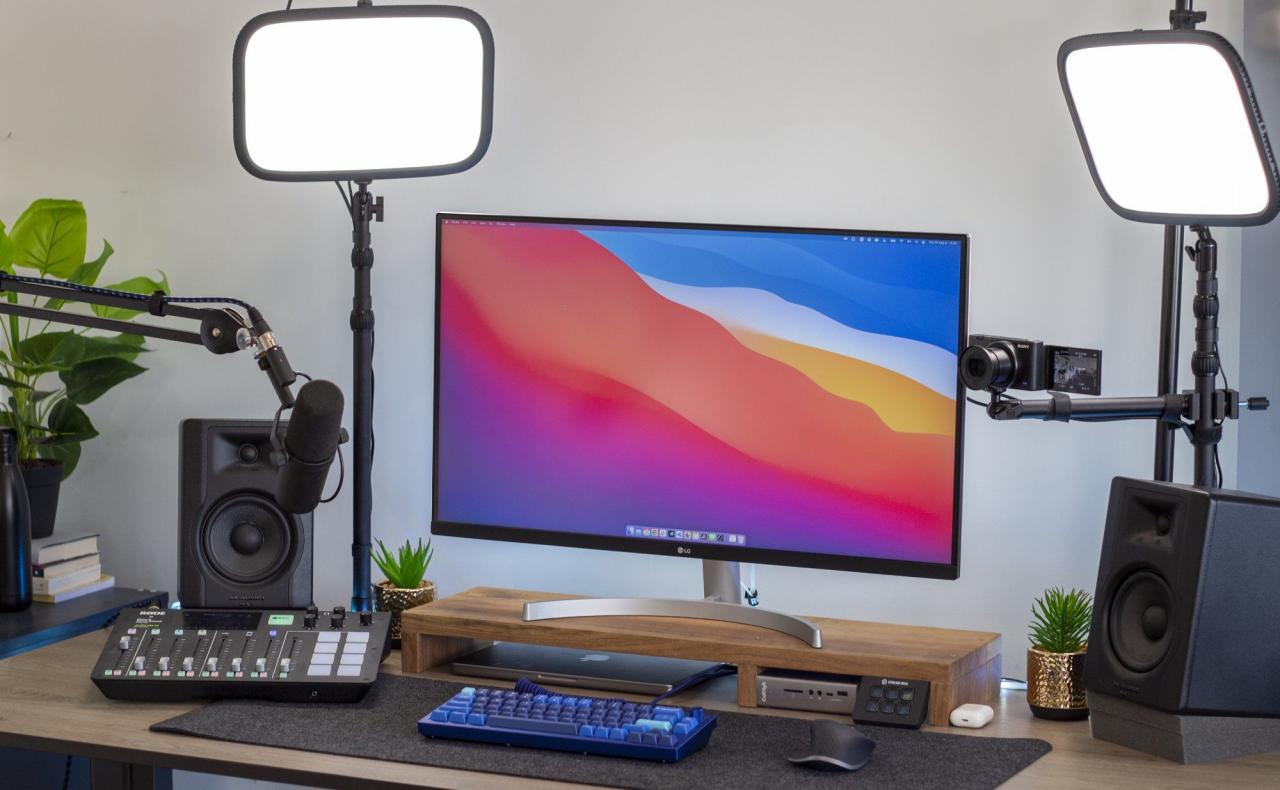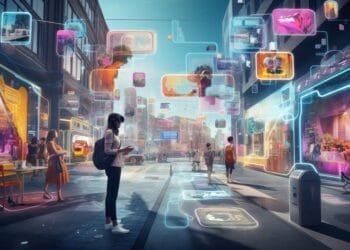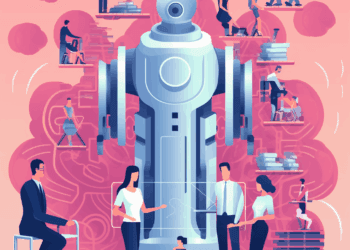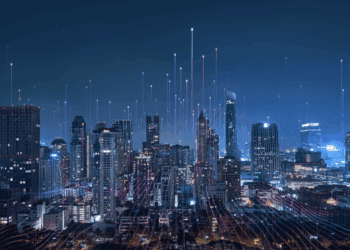In the dynamic digital landscape of the 21st century, a powerful and transformative economic force is redefining career paths, income generation, and the very concept of work: the explosive growth of the Creator Economy. Far from a fleeting trend, this vibrant ecosystem empowers individuals to monetize their passions, skills, and unique content directly, bypassing traditional gatekeepers and fostering unprecedented autonomy. From independent YouTubers and TikTok stars to freelance writers, digital artists, and online educators, the creator economy is democratizing entrepreneurship and fundamentally altering how value is created and exchanged worldwide. This comprehensive article delves into the core principles of the creator economy, exploring its foundational drivers, the diverse platforms and opportunities it presents, its transformative impact on various sectors, and the significant challenges and immense opportunities that accompany this pervasive shift towards individualized digital enterprises.
What is the Creator Economy?

At its essence, the creator economy refers to the ecosystem where independent content creators, curators, and community builders leverage digital platforms and tools to monetize their skills, audience, and intellectual property. Unlike traditional employment, where individuals work for a company, creators in this economy are essentially their own businesses, building direct relationships with their audience and generating income from their unique offerings.
This model represents a significant departure from conventional career paths, emphasizing individual talent, authenticity, and direct audience engagement. It’s about empowering individuals to turn their creativity, expertise, or unique perspective into a sustainable livelihood, often through multiple revenue streams.
Key characteristics defining the creator economy include:
- Individual Empowerment: Creators operate as independent entities, taking direct control over their content, brand, and monetization strategies.
- Direct Audience Connection: Creators build direct relationships with their fans, followers, and customers, fostering loyal communities without relying on traditional media intermediaries.
- Content as Product: The primary “product” is often digital content (videos, articles, music, art, courses, podcasts) or experiences (live streams, virtual events).
- Multiple Revenue Streams: Creators typically diversify their income through various channels, reducing reliance on a single source.
- Platform Dependence (but evolving): While creators leverage digital platforms (YouTube, Instagram, Substack, Patreon, TikTok, Etsy, Twitch), the goal for many is to build an audience that transcends any single platform.
- Passion-Driven: Many creators are driven by a genuine passion for their niche, fostering authenticity that resonates with their audience.
A. Foundational Drivers Propelling the Creator Economy’s Boom
Several interconnected factors have converged to fuel the explosive growth of the creator economy, making it a viable and attractive option for millions globally.
- Ubiquitous Digital Platforms and Tools:
- Social Media Platforms: Giants like YouTube, Instagram, TikTok, Facebook, and X (formerly Twitter) provide unparalleled reach for creators to build and engage audiences, acting as initial discovery channels.
- Monetization Platforms: Dedicated platforms like Patreon, Substack, OnlyFans, and Buy Me a Coffee enable creators to directly monetize their content through subscriptions, tips, or exclusive access.
- E-commerce and Merchandising Tools: Platforms like Shopify and Etsy empower creators to sell physical merchandise directly to their audience, extending their brand beyond digital content.
- Online Learning Platforms: Platforms like Teachable, Thinkific, and Udemy allow experts to create and sell online courses, leveraging their knowledge to generate income.
- Live Streaming Services: Twitch, YouTube Live, and TikTok Live enable real-time audience engagement and direct monetization through donations, subscriptions, and ad revenue sharing.
- Easy-to-Use Creation Tools: Accessible video editing software, graphic design tools (like Canva), podcasting equipment, and even smartphone cameras have lowered the barrier to entry for content creation.
- Shifting Consumer Behavior and Preferences:
- Desire for Authenticity and Relatability: Consumers increasingly prefer genuine, relatable content from individuals over polished, corporate media, fostering deeper connections.
- Niche Content Consumption: The internet allows individuals to find and consume highly specialized content tailored to their specific interests, driving demand for niche creators.
- Direct Support for Creators: Audiences are increasingly willing to directly support creators they value through subscriptions, donations, and merchandise purchases.
- Shift from Passive Consumption to Active Participation: Many platforms now allow for more interactive engagement, making audiences feel like part of a community.
- Changing Workforce Dynamics and Individual Aspirations:
- Desire for Autonomy and Flexibility: Individuals are increasingly seeking control over their work, schedules, and income streams, moving away from traditional employment structures.
- Passion Monetization: The dream of turning a hobby or passion into a full-time career is more attainable than ever before.
- Supplemental Income Streams: For many, the creator economy provides a valuable source of additional income, complementing traditional jobs or bridging income gaps.
- Reduced Barriers to Entrepreneurship: Starting a digital business as a creator requires significantly less upfront capital and overhead compared to traditional brick-and-mortar businesses.
- Global Reach: Creators can build audiences and generate income from anywhere in the world, transcending geographical limitations.
- Emergence of Web3 Technologies:
- Non-Fungible Tokens (NFTs): Provide verifiable digital ownership for creators’ unique digital art, music, or collectibles, offering new monetization avenues and empowering direct artist-to-fan sales with built-in royalty mechanisms.
- Decentralized Autonomous Organizations (DAOs): Allow creators and their communities to collectively own and govern projects, fostering shared incentives and decentralized decision-making.
- Cryptocurrencies: Enable direct, borderless payments and new token-based monetization models within creator ecosystems.
The Creator Economy’s Transformative Impact Across Industries
The explosive growth of the creator economy is not confined to entertainment; its influence is reshaping talent acquisition, marketing strategies, and content distribution across a remarkably diverse range of sectors.
A. Media and Entertainment
The creator economy has fundamentally democratized content creation and distribution, challenging traditional media gatekeepers.
- Independent Content Powerhouses: Individual creators (e.g., MrBeast on YouTube, Charli D’Amelio on TikTok) now command audiences larger than many traditional media outlets, producing high-quality content directly for their fans.
- Niche Media Empires: Creators can build highly engaged audiences around specific, often underserved, niches, offering specialized content that traditional media rarely covers.
- Direct Monetization: Creators earn income directly from their audience through ads (e.g., YouTube AdSense), subscriptions (e.g., Patreon, Substack), merchandise, sponsorships, and direct payments, bypassing traditional revenue shares.
- New Talent Discovery: Platforms serve as discovery engines for new talent, enabling individuals to rise to prominence based on their content and audience appeal.
- Fan Engagement and Community Building: Live streams, Q&As, and community platforms foster deeper, more interactive relationships between creators and their audiences than ever before.
B. Education and Learning
The creator economy is revolutionizing education by enabling experts to share knowledge directly and deliver personalized learning experiences.
- Online Course Creation: Experts on any subject can create and sell their own online courses (e.g., on Teachable, Udemy), providing affordable and flexible learning opportunities to a global audience.
- Personalized Tutoring and Coaching: Independent educators and coaches offer one-on-one or group sessions, tailoring content and delivery to individual student needs and learning styles.
- Skill-Based Content: Creators produce practical “how-to” videos, tutorials, and guides on platforms like YouTube and TikTok, teaching specific skills (e.g., coding, cooking, DIY) to millions.
- Community-Based Learning: Platforms allow creators to build learning communities where students can interact with each other and the instructor, fostering a sense of shared progress.
- Democratization of Expertise: Individuals with niche expertise can now share their knowledge directly, making specialized learning accessible outside traditional academic institutions.
C. Marketing and Advertising
The creator economy has birthed a powerful new form of marketing that leverages authentic voices to reach engaged audiences.
- Influencer Marketing: Brands collaborate with creators (influencers) whose audiences align with their target demographic, leveraging their authenticity and reach to promote products and services in a more relatable way than traditional advertising.
- Authentic Brand Storytelling: Creators can integrate brands into their content organically, telling compelling stories that resonate with their audience, leading to higher engagement and trust.
- Niche Audience Targeting: Brands can access highly specific, engaged audiences by partnering with creators in niche markets, leading to more effective and targeted campaigns.
- Content Creation on Demand: Brands can commission creators to produce user-generated content (UGC) that feels more authentic and can be repurposed across various marketing channels.
- Performance-Based Partnerships: Many influencer marketing deals are moving towards performance-based models, tying creator compensation to measurable outcomes like sales or leads.
D. Arts and Culture
The creator economy is providing artists, musicians, writers, and designers with unprecedented opportunities to monetize their work directly.
- Music and Audio Monetization: Independent musicians can release their music on streaming platforms, generate income from digital sales, and connect directly with fans through live streams and merchandise. Podcasters can monetize through ads, sponsorships, and listener support.
- Digital Art and NFTs: Artists can create and sell unique digital artworks as NFTs, providing verifiable ownership and allowing for direct artist-to-collector sales, often with built-in royalty clauses for secondary sales.
- Patreon and Fan Subscriptions: Writers, illustrators, and visual artists can build subscription models on platforms like Patreon, offering exclusive content or access to their creative process to paying subscribers.
- Merchandise Sales: Creators extend their brand by selling physical merchandise (t-shirts, prints, accessories) directly to their fanbase, turning their creative endeavors into tangible products.
- Live Streaming Performances: Dancers, comedians, and visual artists can perform live for a global audience, receiving tips and subscriptions in real-time.
E. Software and Tools
The boom in the creator economy has, in turn, fueled a massive industry dedicated to building tools and platforms for creators.
- Creator Software: Companies develop specialized software for video editing, graphic design, audio production, live streaming, and community management tailored to creators’ needs.
- Monetization Platforms: The growth of platforms enabling subscriptions, tips, merchandise sales, and NFT minting for creators.
- Analytics and Insights Tools: Providing creators with data dashboards to understand their audience, content performance, and revenue streams, enabling data-driven decision-making.
- AI-Powered Creation Tools: Emerging AI tools assist creators with tasks like content generation (text, images, music), video editing, and translation, streamlining their workflow.
- Creator Economy Marketplaces: Platforms that connect brands with creators for collaboration opportunities (e.g., influencer marketing platforms).
Challenges and Considerations in the Booming Creator Economy

Despite its immense benefits and transformative power, the rapid growth of the creator economy brings forth significant challenges and critical considerations for creators, platforms, and policymakers alike.
A. Income Instability and Sustainability
- Income Volatility: Earnings for creators can be highly unpredictable, fluctuating based on algorithm changes, audience engagement, sponsorship deals, and market trends, making financial planning difficult.
- Platform Dependence: While offering reach, creators are often subject to platform policies, monetization rules, and algorithm changes, which can drastically impact their income and audience reach.
- High Competition: The low barrier to entry means a vast number of creators compete for audience attention and revenue, making it challenging to stand out and build a sustainable income.
- Burnout: The constant pressure to create engaging content, manage multiple platforms, interact with audiences, and handle business operations can lead to significant burnout and mental health challenges for creators.
- Demonetization and Censorship: Creators can face demonetization (loss of ad revenue) or even deplatforming due to content policy violations (sometimes inconsistently applied) or controversial topics, impacting their livelihood.
B. Worker Rights and Protections
- Lack of Benefits: Most creators are classified as independent contractors, meaning they typically lack traditional employment benefits such as health insurance, paid time off, retirement plans, and unemployment insurance.
- Tax Complexities: Navigating self-employment taxes, international tax laws (for global audiences/clients), and managing business expenses can be complex and burdensome for individual creators.
- Intellectual Property and Copyright: Protecting original content from piracy, unauthorized use, and copyright infringement on various platforms is a continuous challenge for creators.
- Exploitation and Unfair Contracts: Some creators, especially those new to the industry, may be vulnerable to unfair contracts from brands, talent agencies, or platforms that demand large cuts of their earnings.
- Legal Recourse: When disputes arise, creators may lack the legal or financial resources to pursue recourse against larger platforms or brands.
C. Audience Relationship and Engagement
- Algorithm Changes: Sudden changes in platform algorithms can significantly impact a creator’s reach and visibility, disrupting their audience growth and revenue streams.
- Audience Retention: Building and retaining a loyal audience requires continuous effort, consistent content quality, and authentic engagement, which can be demanding.
- Parasocial Relationships: The intimate connection creators foster with their audience can sometimes lead to unhealthy “parasocial relationships,” where fans feel they know the creator personally, leading to boundary issues or unrealistic expectations.
- Negative Feedback and Harassment: Creators are often exposed to direct public feedback, including criticism, trolling, and harassment, which can take a toll on their mental well-being.
D. Platform Governance and Accountability
- Content Moderation: Platforms face immense challenges in consistently and fairly moderating vast amounts of user-generated content, balancing free expression with preventing harmful content.
- Transparency of Algorithms: The “black box” nature of platform algorithms (determining content visibility, recommendations, and monetization) lacks transparency, leaving creators without clear understanding of why their content performs as it does.
- Data Ownership: While Web3 aims for user ownership, on many Web2 platforms, creators do not fully own their audience data or the content they upload, giving platforms significant control.
E. Ethical Considerations
- Misinformation and Disinformation: The democratization of content creation also means a proliferation of misinformation and disinformation from unverified sources, challenging public trust and societal cohesion.
- Impact on Youth: The allure of becoming a “creator” can place immense pressure on younger generations, often leading to unrealistic expectations and mental health struggles.
- Consumer Protection: How can platforms ensure that creators’ content is ethical, transparent (e.g., sponsored content disclosures), and not misleading to consumers?
- Environmental Impact of NFTs: While not inherent to all creator economy activities, some Web3 technologies like NFTs (especially on Proof-of-Work blockchains) raise environmental concerns due to high energy consumption.
Conclusion
The Creator Economy is unequivocally booming globally, representing a profound shift in how individuals pursue their passions, build careers, and generate value in the digital age. Driven by accessible platforms, evolving consumer preferences for authentic content, and a universal desire for flexibility, it has democratized entrepreneurship and fostered unprecedented levels of individual autonomy. From redefining media consumption and personalizing education to transforming marketing and empowering artists, its pervasive influence is undeniable and continues to expand rapidly.
However, the journey within this flexible, yet demanding, economic model must be navigated with careful consideration. Addressing the formidable challenges of income instability, worker rights, platform dependence, and mental well-being is essential for its long-term sustainability and fairness. By fostering collaboration among platforms, creators, policymakers, and ethical advocates, we can ensure that the creator economy evolves responsibly, building a more equitable, empowering, and ultimately more enriching future of work for all. The creator economy isn’t just booming; it’s redefining the very essence of modern economic participation and human creativity.













